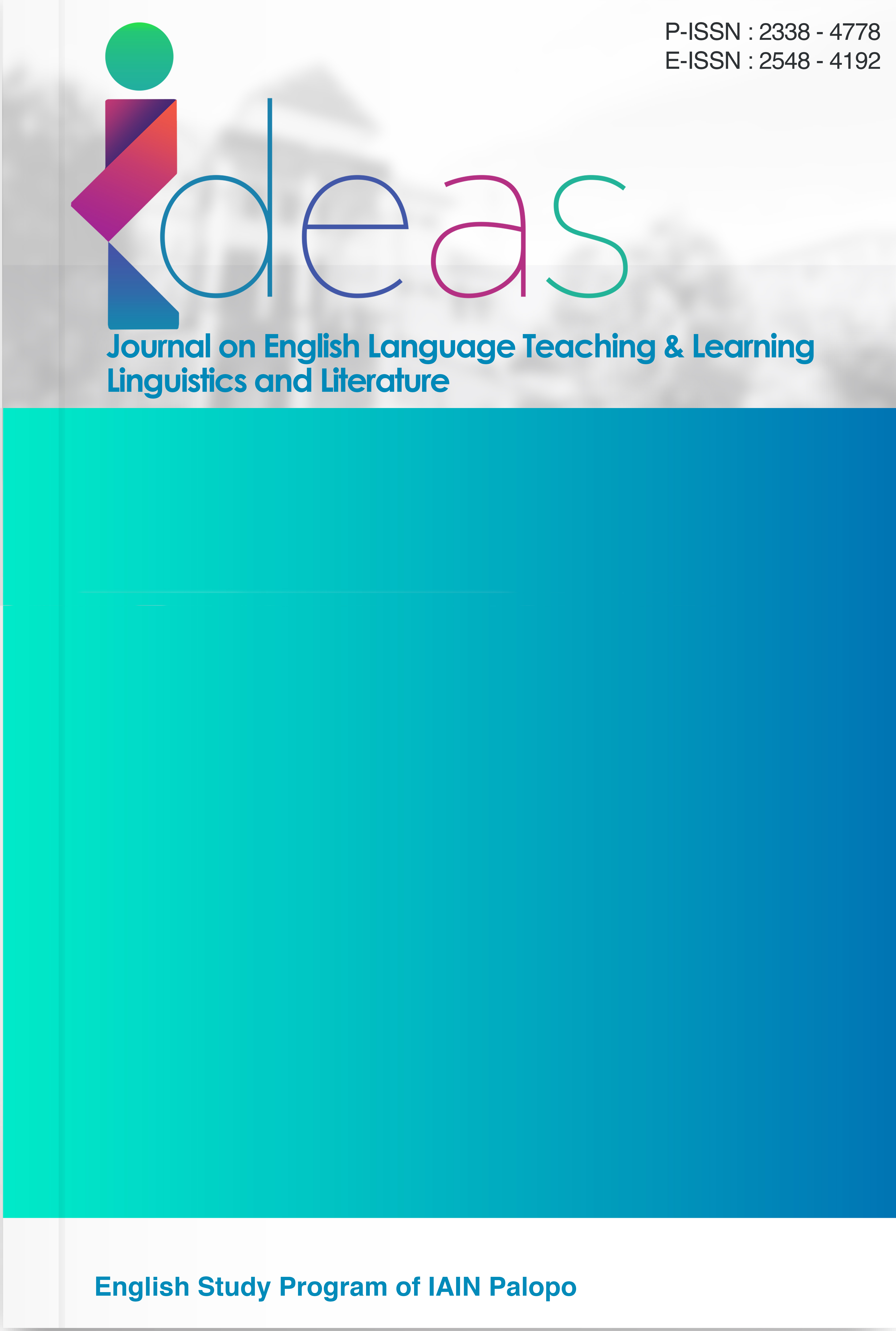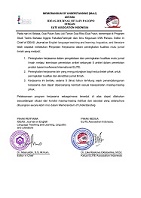The Impact of Project-Based Learning on Students' Engagement and Performance in English-Speaking Class at Senior High School
DOI:
https://doi.org/10.24256/ideas.v13i2.6576Keywords:
speaking comprehension, project based learningAbstract
This study aims to analyze the process of the implementation of speaking using project- based learning method in speaking class at Senior High School and to find out whether the performance of project-based learning in speaking Class, in class twelve Senior High School. The type of research used qualitative method. The implementation of PjBL enables collaboration between students, strengthens social skills, and builds the ability to work in teams. Projects require active communication, sharing of ideas, and assignment of tasks, which can shape students' interpersonal skills. PjBL also provides opportunities for students to develop soft skills, such as leadership, collaboration, and time management, which have long-term value in their personal and professional lives. The result show that the students implementing their project follow the step of the implementing the project during learning in the class. Based on the explaining about we can conclude that the implementing of project-based learning method in speaking class can make the students have to take an active role.
References
Arifin,.Z,. (2013). Evaluasi Pembelajaran Pinsip, Teknik, Prosedur, Bantung:PT. Remaja Rodaskarya. Azhar, A. (2009). Media Pembelajaran.Jakarta: Raja Grafindo Persada.
Barnes, K., Marateo, R. C., & Ferris, S. P. (2007). Teaching and Learning with the Net Generation. Innovate: Journal of Online Education, 3(4), 1–8. http://doi.org/10.1111/j.1467- 8535.2009.00994_2.x/.
Cairi, S., Mulyani & Mulyadi,S (2023) The Effectiveness of Powtoon Based Media on Project Based Learning (pjbl) to Improve students Ability, Journal Ilmiah
Criticos, C. (1996). Media selection. Plomp, T & Ely, D.P (Eds): International Encyclopedia of Educational Technology, 2nd ed. UK: Cambridge University Press. pp. 182 - 185.
Gagne, R.M., Briggs, L.J & Wager, W.W. (1988). Principles of Instruction Design, 3rd ed. New York: Saunders College Publishing.
Hamalik, O. (1994). Media Pendidikan, cetakan ke-7. Bandung: Penerbit PT. Citra Aditya Bakti.
Hana,.A. (2022), Students difficulties in speaking English for Efl Students at Eleven Grade of MA Miftahul Ulum Kradinan Madium. Skripsi
Haryoko, S. (2010). Efektivitas Pemanfaatan Media Audio-Visual Sebagai Alternatif Optimalisasi Model Pembelajaran. Jurnal Edukasi@Elektro, 5(1), 1–10. Retrieved from http://journal.uny.ac.id/index.php/jee/
Ilyosofna, N, A (2020) the importance of English language. International journal on orange technologies
Khoiriyah, & Setyaningrum, R.W. (2015) PBL. Speaking Malang, Pdf. in celtic (Vol.2, issues 3,)
Masruddin, M., & Nasriandi, N. (2022). Lexical and Syntactical Errors Performed by Junior High School Student in Writing Descriptive Text. IDEAS: Journal on English Language Teaching and Learning, Linguistics and Literature, 10(1), 1094-1100.
Masruddin, M., Amir, F., Langaji, A., & Rusdiansyah, R. (2023). Conceptualizing linguistic politeness in light of age. International Journal of Society, Culture & Language, 11(3), 41-55.
Rahmawati. (2020). The Effectiveness of problem Based Learning and Aptitide treatment Interaction in Improving Mathematical Creative Thinking Skill on Curriculum 2013. Europan journal of Education Researcher. Vol 9. UIN Lampung.
Downloads
Published
Issue
Section
Citation Check
License
Copyright (c) 2025 Resty Wahyuni

This work is licensed under a Creative Commons Attribution-ShareAlike 4.0 International License.
Authors retain copyright and grant the journal right of first publication with the work simultaneously licensed under an Attribution-ShareAlike 4.0 International (CC BY-SA 4.0) that allows others to share the work with an acknowledgement of the work's authorship and initial publication in this journal.
Authors are able to enter into separate, additional contractual arrangements for the non-exclusive distribution of the journal's published version of the work (e.g., post it to an institutional repository or publish it in a book), with an acknowledgement of its initial publication in this journal.
Authors are permitted and encouraged to post their work online (e.g., in institutional repositories or on their website) prior to and during the submission process, as it can lead to productive exchanges, as well as earlier and greater citation of published work (See the Effect of Open Access)




